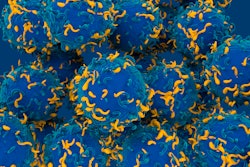
Pregnant women who are economically disadvantaged are more likely to have asthma symptoms from consuming too few omega-3 nutrients and a high amount of omega-6 fats. That’s according to the study, “Prenatal Omega-3 Fatty Acid Status in High Risk Pregnant Women with Asthma,” from the Icahn School of Medicine at Mount Sinai in New York City. The results were presented during the 2024 American Thoracic Society International Conference in San Diego.
The study, which looked at an ethnically diverse cohort, concluded that participants consumed far below the recommended levels of 250 mg to 500 mg per day of omega-3 fatty acids.
“It was important for us to be able to look at this population in particular,” study author Najla N. Abdurrahman, MD, said to news outlet Healio. Dr. Abdurrahman is a fellow in the school’s division of pulmonary, critical care and sleep medicine. “We know from prior studies that members of economically disadvantaged groups tend to consume a less nutritional diet due to factors such as food deserts and the high cost of healthy foods. This diet tend tends to be lower in omega-3 and higher in omega-6 fatty acids.”
The study included 20 urban women who were ethnically diverse, had asthma and were in the early months of pregnancy. Researchers followed participants until delivery. Participants were surveyed using a National Cancer Institute-validated dietary questionnaire during each trimester to assess their omega-3 and omega-6 fatty acid consumption. Blood samples measured fatty acids in serum, and asthma control was assessed using the Asthma Control Test (ACT). Researchers also looked at lung function through daily, coached, remote spirometry in each trimester. Regression models generated data to find the association between fatty acid status and asthma outcomes.
In measuring eicosapentaenoic acid and docosahexaenoic acid (omega-3 fatty acids), nearly all participants consumed far below the recommended levels. Three of the women in the study had a value within normal range at some stage in their pregnancy.
“We have seen from previous studies that omega-3 may have protective effects on asthma symptoms, and that diets with higher omega-6 can be pro-inflammatory,” Dr. Abdurrahman said. “Inflammation and asthma are intertwined in ways that are very complex and not perfectly understood. Looking at the role or the potential effects of these dietary nutrients in asthma in a pregnant cohort was interesting to us because this is a point in the lifespan where diet affects two people and can set the stage for lifelong health of the offspring.”
Despite an omega-3 deficiency, it’s unclear whether the women would achieve asthma control from an increase in the fatty acid, Dr. Abdurrahman said. However, researchers did detect an association between omega-6 and asthma symptoms. According to the study, women with higher plasma concentrations of omega-6 were “worse off in terms of their asthma symptoms” after adjusting for contributing factors such as BMI and energy intake.
“Our main takeaway from this is that serum omega-6 was inversely associated with control of asthma symptoms and that omega-3 intake was much too low in our study population to detect significant associations,” Dr. Abdurrahman said. “But because we know a lot about the importance of omega-3 fatty acids for lung health and also for fetal development from prior research, we think that these findings can inform future public policy and clinical studies.”

























